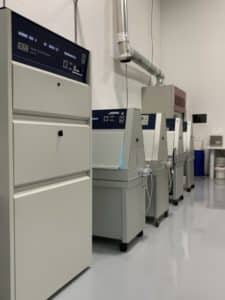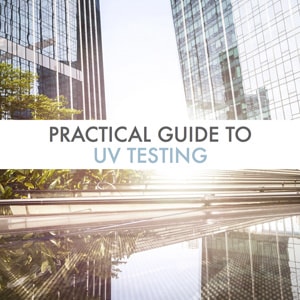PV 3929
Abrasion Test Standard for Non-Metallic Materials in Dry-Hot Climate - Volkswagen
PV 3929 is a test method which is exclusive to Volkswagen and that depicts an accelerated weathering method which allows assessing the aging behavior of plastics, elastomers and folding top cloths through the use of UV testing. More precisely, this norm relies on the use of Xenon arc light as an emitting source and this source is based on the practice of ASTM G-155. Micom offers PV 3929 testing as part of its automotive testing services.
Aging behavior of plastic, elastomer and folding top cloths – use and factors to consider
PV 3929 is a standard that describes the test conditions that are required in order to do an accelerated aging which reproduces a dry and hot climate. Conversely, VW also has a test method for humid and hot climates: PV 3930. Furthermore, those conditions represent a year’s worth of UV radiations that are comprised between the 300 and 385 nm wavelengths. Even though ASTM D7869 is quite similar to PV 3929, its purpose differs by the fact it is trying to replicate a subtropical weather which corresponds to a hot and humid climate. This test mainly consists of evaluating aesthetics such as: gloss and color change. Moreover, in some cases, some mechanical proprieties have to be evaluated.
The main factors that are to be considered when conducting this standard are: the filter, the rotation of the specimen, the temperature of the black standard and of the specimen chamber during the dry period, the relative humidity, the intensity of irradiation, the length of the test and the irradiation dose.

Typical Experimental parameters
Table 1 lists the typical conditions for Q-panel apparatus and other settings have to be used for other machines. The sample size is 135 x 45 mm.
Table I: Typical conditions for accelerated weathering using the Q-panel apparatus
| Parameters | Specifications |
| Filter | Daylight filter |
| Rotation of the specimen | Flatbed equipment |
| Temperature of the black standard | 90 ± 2°C |
| The specimen’s chamber temperature during the dry period | 50 ± 2°C |
| Relative humidity | 20 ± 10 % |
| Irradiation intensity | 75 W/m² (300 to 400 nm) |
| Test length | About 1500 h |
| Dose of irradiation (end point) | 400 MJ/m² |
Other test methods related to PV 3929
For additional related test methods, please see ISO 4892, ISO 11341.
If you have any questions about PV 3929, we invite you to contact us today. It will be our pleasure to answer your questions.
Practical UV Testing Guide
Sunlight exposure can have harmful impacts on carbon-based
materials such as coatings, polymers, textiles, and many others.
Learn more about our in-laboratory UV testing process in this guide.


